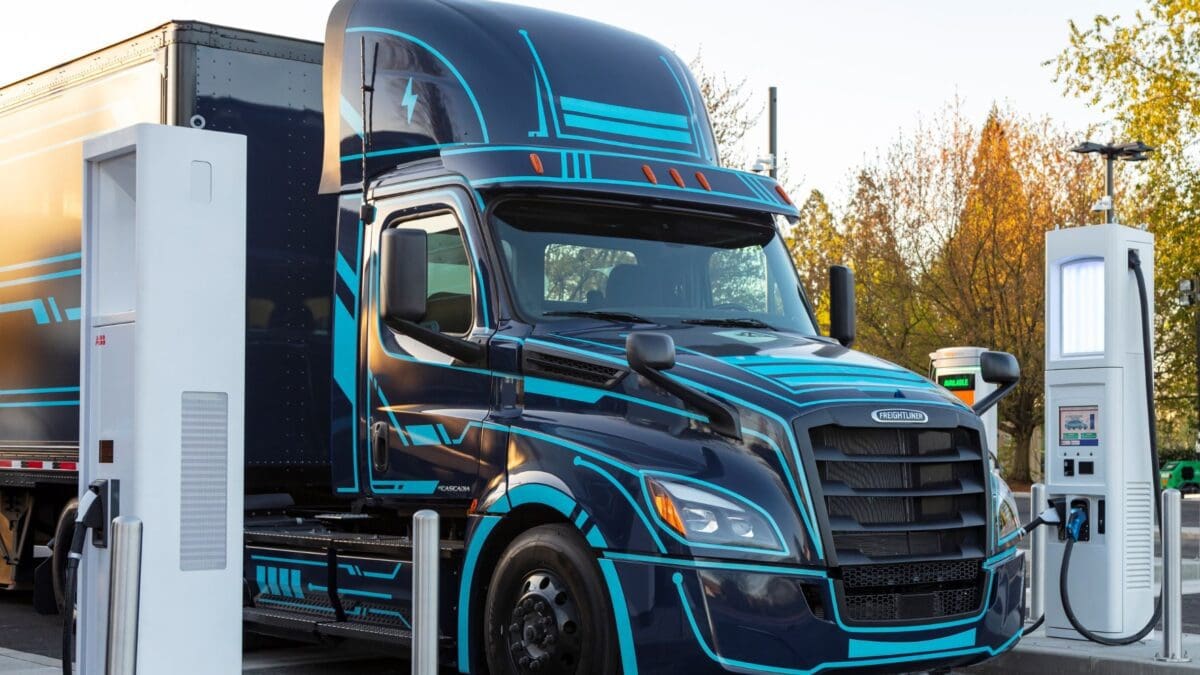
- GNA Insight
- News Story
Electric truck incentives plentiful today but won’t last forever
May 30, 2023
Source: Freight Waves
This story is part of a series concerning California’s impending regulations on zero-emissions vehicles, which have the potential to upend the American trucking industry. You can follow along with the stories here.
Generous incentives California offers to offset the cost of transitioning to electric trucks are not forever: The spiffs begin to disappear as the regulations go into effect.
“You typically can’t take an incentive to perform a regulated action, something you would have to do under a mandate,” said Joe Annotti, senior vice president of programs at Gladstein, Neandross & Associates (GNA). It is a Santa Monica, California, consultancy that works with fleets to prepare them for electric trucks.
The phaseout of the spiffs for electric trucks, chargers and the infrastructure to support them is a lesser-known downside.
Something similar happened to once-incentivized energy-efficiency improvements in buildings. Now that prudent energy use is the rule, there’s no financial break for doing it.
“Once regulation takes effect, all of these perks and bennies start going away,” said Liana Rios, electric vehicle customer solutions manager at San Diego Gas & Electric (SDG&E).
No need for despair with many incentives still out there
Ample ways will remain to reduce the cost of transitioning to electric vehicles.
“This is not a coatrack with one prong that we need to hang our hat on,” Annotti said. “There’s plenty of opportunities out there to chase, and we’ll continue to see those persist.”
Between California and other state and federal programs, 600 to 650 incentive programs apply to clean transportation.
“The theory behind incentives is that it’s a bridge between now and then,” Annotti said, adding that electric trucks cost three to four times as much as a diesel-powered model. “How do we get a Class 8 electric truck that costs $450,000 down to a Class 8 diesel truck? The answer is incentives.”
Overcompliance can be a winning strategy
For at least the near future, fleets purchasing enough electric vehicles to stay ahead of the percentages required for their specific operations can redeem vouchers and claim other grants. California is seeking to remove diesel trucks from its roads by 2040.
“Where the opportunity exists right now is what we call overcompliance,” Annotti said. “If I’m a fleet today, I can get myself above what I will eventually be required to do. Once those regulations hit, I can keep myself above, or over-compliant.”
Some larger fleets like Penske Truck Leasing, Schneider, Sysco, U.S. Foods and NFI Industries are doing exactly that.
It’s the rest of the tens of thousands of fleets that might be in for a rude awakening. The recently passed California Clean Fleets Rule requires some fleets to purchase at least 9% of their vehicles operating in the state to be zero-tailpipe emission beginning in 2024. The rule ratchets up the percentages from there.
The California Air Resources Board voted in favor of the rule on April 27, the Friday before the GNA-sponsored Advanced Clean Transportation Expo opened in Anaheim. It caused quite a stir.
“Having 12,000 people talking about what happened a couple of days before was a really enlightening experience for a lot of folks,” Annotti said.



